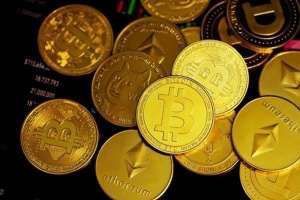After the decline started in the second part of last year, which took the dollar to a low not seen since the spring of 2022, the attractiveness of the United States currency has started to increase again. The US Dollar Index (DXY) rose yesterday to its highest level since November last year, after an eleven-week increase, the best performance in the last nine years, according to data presented by Investing.com.
Compared to the low in mid-July, the index, which reflects the evolution of the US currency compared to a basket of six other currencies, is up 7.5%, thus recovering half of the decline from the high in September 2022. In contrast, the euro, whose evolution is illustrated most frequently compared to the dollar (EUR/USD pair), had a completely opposite movement, determined by the strengthening of the American currency but also by aspects strictly related to the economy of the area.
The more aggressive rhetoric from the Federal Reserve, which has warned that interest rates may be raised further and will likely keep them high for longer, according to analysts polled by international media, the robustness of the US economy compared to those in Europe and Asia , which are showing signs of weakness, and rising oil prices are among the factors that supported the performance of the US currency.
• Economists polled by Reuters expect the eurozone economy to grow by 0.6% this year and the US by 2%
Kit Juckes, head of currency strategies at Societe Generale, believes the focus is starting to shift more to economic growth than what central banks are doing, according to an opinion poll of Reuters.
The European Central Bank recently raised its benchmark interest rate to 4%, improving its inflation forecast for next year. The ECB has also promoted the idea that rates will remain high for a longer period, which should support the euro. But markets see weaker economic performance from the region and believe the bank will be forced to cut interest rates ahead of the Federal Reserve in the United States. On the other hand, the Fed kept rates constant at the last monetary policy meeting (the key rate being in the range of 5.25%-5.5%), but signaled that another increase is likely to follow this year. Thus, analysts expect that the ECB will not raise rates in November, but that the Fed will raise interest rates by 25 basis points, according to Reuters.
Against this background, yields on US Treasuries, which have also supported the US currency, recently climbed to levels not seen since the mid-2000s, with the ten-year yielding a 4 at 1pm yesterday, 71% (the highest level since August 2007), while for those with a maturity of 30 years, the rate of repayment of investors amounts to 4.82%, according to Investing.com data.
Nathan Thooft, chief investment officer of Manulife Investment Management, attributes the US currency's performance to economic dynamics. "The data suggests that right now the US economy is in much better shape than most of Western Europe," Thooft said, quoted by Reuters.
Economists polled by the media trust expect the eurozone economy to grow by 0.6% this year, the UK's by 0.4% and the United States by 2%, according to a survey published last week.
• Themos Fiotakis, Barclays: "The United States is an oil producer, so it is less affected by high crude oil prices"
Another factor that supported the US dollar is the price of oil, which recently reached the maximum of the last year, after an increase of about 25% since the beginning of July.
"The United States is an oil producer, so it is less affected by high crude prices, while Europe and Japan are affected more," said Themos Fiotakis, head of currency strategies at Barclays, according to Reuters. "European central banks were in a difficult situation as high oil prices threatened to push inflation higher."
• Kit Juckes: "The Euro sets its sights on parity"
In the short to medium term, the general view appears to be that the current environment and immediate outlook favors continued strengthening of the dollar, primarily against the European currency.
Kit Juckes from Societe Generale, believes that the euro is "setting its sights on parity", that is, a one-to-one ratio against the dollar, which implies the depreciation of the European currency compared to the American one. According to the team at FXStreet Insights, the continued rise in commodity prices will deal another blow to the Eurozone economy.
"High energy prices will have a negative impact on the balance of payments of the area, which is a net importer of energy. While we believe this will add downside pressure to the euro, EUR/USD is unlikely to test last year's low of 0.95 as warehouses are better stocked for the winter ahead," the analysts wrote in an article published late last week.
According to the FXStreet team, the lack of momentum from interest rates and the relative difference in economic growth compared to the United States limits the potential for EUR/USD appreciation until the end of the year. "But we are more bullish on 2024 as US economic strength moderates," FXStreet wrote.
• Diego Colman: "Unlike the situation in Europe, the Federal Reserve maintained its hawkish position
Diego Colman, contributing strategist at DailyFX, says the eurozone's macroeconomic landscape faces significant challenges. "Economic activity has deteriorated sharply in many bloc countries. In particular, Germany, often seen as the driving force behind the continent's growth, has once again been labeled the "sick man of Europe" after entering a technical recession at the start of the year," the strategist wrote in an article late last week.
Colman says that with the region's economy in crisis, the European Central Bank appears to have ended its monetary tightening campaign after raising interest rates for the tenth time in a row in September. "Unlike the situation in Europe, the Federal Reserve maintained its hawkish position (n.r. denoting an aggressive policy). The exceptional resilience of the U.S. economy, combined with persistent inflation, has led policymakers to keep the door open for another 25 basis point hike in 2023 and signal that interest rates will remain elevated longer than originally anticipated," he wrote the strategist.
In his opinion, this difference in policy between the European Central Bank and the Federal Open Market Committee FOMC - the arm of the Fed that determines the direction of monetary policy), together with the economic "exceptionalism" of the United States, created a climate that favors the US dollar for the rest of the year . "However, this may mean further losses for the EUR/USD pair in the fourth quarter, with the prospect of new lows in 2023," the strategist wrote on DailyFX.
Note
The US Dollar Index (DXY) is a measure of the value of the US dollar compared to a basket of six other currencies: the euro (with a weight of 57.6% of the basket), the Japanese yen (13.6%) , the British pound (11.9%), the Canadian dollar (9.1%), the Swedish krona (4.2%) and the Swiss franc (3.6%), according to investopedia.com.
















































